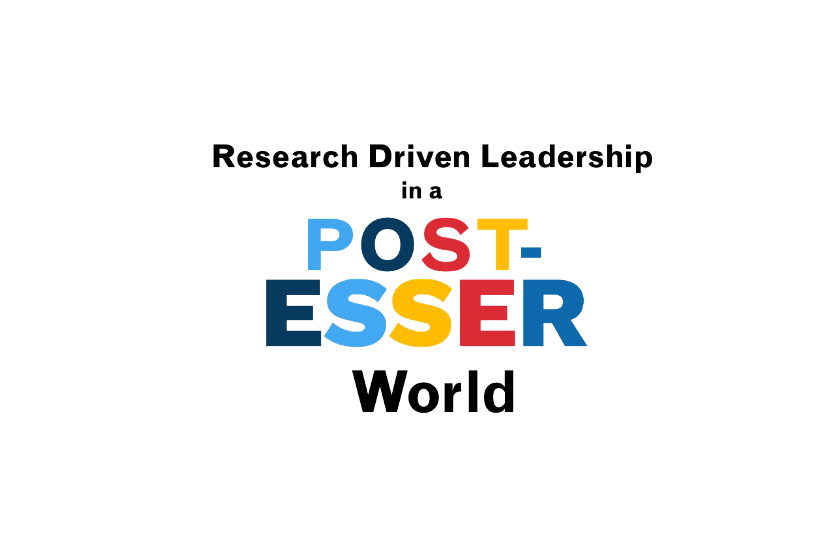Harnessing the Power of Networks: A Three-Tiered Approach for Emerging Education Leaders

Let me extend a warm welcome to new education leaders stepping into the pivotal roles of principals or superintendents, or those transitioning into new districts or even different states. As an educational leader with nearly two decades of experience, it is incumbent upon us to equip all new leaders with insights gleaned from our collective decades (and centuries) of leadership experience. One element that often remains underappreciated in the journey to effective leadership is the power and potential of networks. The general perception of a network is often that of a nebulous, ubiquitous entity, commonly taken for granted. This article seeks to redefine and restructure this conception, presenting an innovative three-tiered approach: the Social Network, the Strategic Network, and the Professional/Personal Growth Network.
Social Networks: The Foundation
The Social Network forms the first tier and acts as a cornerstone in this triadic structure. Comprising an extensive group of individuals, this network typically includes peers within the field of education but is not strictly limited to them. Many people tend to think of their personal social networks and professional social networks. They are similar in many regards, but with some key differences. All social networks function as a supportive community where you can engage in enjoyable activities, share common interests, and unwind. This broad base provides a critical social outlet, fostering mental well-being amidst the taxing demands of educational leadership. Yet, this network is often characterized by a surface-level familiarity. As comforting as they are, these connections may lack the depth needed to assist you through significant leadership challenges, paving the way for the second tier.
Strategic Networks: The Pillars of Support
Strategic Networks, the second tier, consist of a much smaller group of individuals who have evolved from being acquaintances in your social network to individuals you deeply respect and admire. Their proven wisdom and experience can serve as pillars of support when facing dilemmas, acting as strategic thought partners in times of crisis. Whether it’s discussing complex administrative issues or brainstorming creative solutions, these individuals provide the insight and perspective that can prove crucial in decision-making.
To begin with, your strategic network is typically established from those who have exhibited wisdom and experience you value. These are the individuals to whom you find yourself turning to in times of dilemmas or crisis, functioning as strategic thought partners. But how does a professional acquaintance become a trusted advisor? The key lies in the cultivation of trust and reciprocal learning. As you interact with these individuals more deeply, engaging in dialogue beyond surface-level exchanges, you may find that their viewpoints challenge or complement your own in ways that stimulate growth. This synergy helps cultivate a bond that transcends professional acquaintance and positions them as strategic partners.
One of the greatest strengths of a strategic network lies in its diversity. Thought partners who originate from very different contexts than your own can offer invaluable perspectives and solutions you might not have considered otherwise. They bring a different set of experiences, challenges, and successes that can broaden your understanding and enhance your problem-solving abilities.
Take, for example, a situation where you are leading a small district, and one of your strategic network members is from a considerably larger one. Their scale of operations and the complexities they navigate daily may vastly differ from yours. However, their approaches to managing these complexities can provide you with unique insights and innovative solutions that can be adapted to your context. Similarly, an urban education leader can learn much about community engagement and localized learning from a peer in a rural district or, a colleague working in a different state could enlighten you about the unique regulations and policies they work under, which might inspire novel ideas for tackling your own district’s challenges.
In essence, the strength of your strategic network is fueled by its diversity. The varied backgrounds and experiences of its members foster an enriched dialogue and an expansive thought process, ensuring that your problem-solving approach is not myopic but multifaceted. Through their diverse perspectives, these individuals not only provide insight and wisdom during times of crisis but also contribute to your ongoing professional development. These strategic networks, therefore, form a robust pillar of support in your leadership journey, helping you tackle complex issues and navigate decision-making processes effectively.
Professional/Personal Growth Networks: The Catalysts
The final tier, the Professional/Personal Growth Network, is the smallest and yet the most potent. This network comprises individuals genuinely interested in your development as a leader and as a person. They are individuals who offer keen insights into leadership and can be entrusted with the highest levels of confidentiality. Their dedication to your growth, their ability to challenge your assumptions and push your boundaries, sets them apart. They are not merely advisors; they function as catalysts for your professional and personal growth.
The transition of an individual from your Strategic Network to your Professional/Personal Growth Network can occur organically over time. It usually begins with recognition, not just of their wisdom or experience, but also their sincere interest in your growth. You may notice that certain individuals from your Strategic Network exhibit a keen understanding of your potential, provide thoughtful feedback, and show a consistent commitment to your long-term development. These individuals extend their involvement beyond immediate problem-solving or crisis management, diving deeper into questions about your vision, values, and aspirations. Such depth and dedication make them prime candidates for your Professional/Personal Growth Network.
However, it’s essential to maintain a clear distinction between the two networks. While the people in your Growth Network can technically serve in your Strategic Network, it is inadvisable to blend these roles without thoughtful consideration. Here’s why: your Growth Network’s role is not to help you navigate immediate challenges but to help you envision who you are becoming, focusing on long-term development and growth. They work with you to shape your future trajectory, exploring and challenging your underlying assumptions and helping you realign your path as necessary. This role requires a degree of impartiality and distance from day-to-day operations, which might be compromised if they are also part of your Strategic Network.
Keeping the networks separate allows for a clear demarcation of roles. Your Strategic Network members remain the advisors who help you think through immediate problems and dilemmas, while your Growth Network focuses on your development as a leader and as a person. These roles are
complementary, but different, each crucial in its own way to your success and growth. Recognizing this distinction and maintaining these boundaries allows you to harness the full potential of both networks in your leadership journey.
In essence, social networks provide necessary mental support, strategic networks act as a pillar when faced with challenges, and professional/personal growth networks are vital catalysts for personal and professional development. Collectively, these networks form the backbone of successful leadership in education.
Moving from Understanding to Action
Having understood the three-tiered network structure, the next step is the call to action: all education leaders, irrespective of their tenure, are encouraged to actively participate in their professional organizations, keeping these networks in mind. Strive not only to build these networks but nurture them over time. These are not stagnant constructs but vibrant, evolving ecosystems that hold immense potential for growth and development. One such platform to foster these networks is the District Administration Leadership Institute (DALI). DALI offers an authentic environment for education leaders to build connections at every level. With its vibrant community, DALI allows education leaders to engage with peers, seek guidance from seasoned experts, and partake in enriching discussions that foster personal and professional growth.
More than just a meeting place, DALI presents opportunities to cultivate relationships that could grow into your strategic and professional/personal growth networks. By interacting with a diverse set of education leaders, you can gain insights into their experiences, learn from their successes and mistakes, and apply these lessons to your leadership journey.
As you embark on your journey in educational leadership, remember that building these networks is not a singular event but a continuous process. Your networks are living entities that grow, change, and adapt with you. The more effort and time you invest in them, the more rewards they will yield. They are the lifelines that will guide you, support you, and challenge you in your journey.
As leaders in education, it is our collective responsibility to build and foster these networks. Engage with them, learn from them, and grow with them. Welcome to the beautiful journey of educational leadership. With these three networks at your helm, navigate confidently, knowing that you’re not alone but surrounded by a group of individuals who are eager to support and learn alongside you. Take the leap, get involved, and explore the opportunities that DALI and similar organizations offer. Together, we can lead, learn, and ensure a brighter future for our next generation.
Posted by: Quintin Shepherd
Recommend0 recommendationsPublished in Leadership Voices, Newsletter






Responses